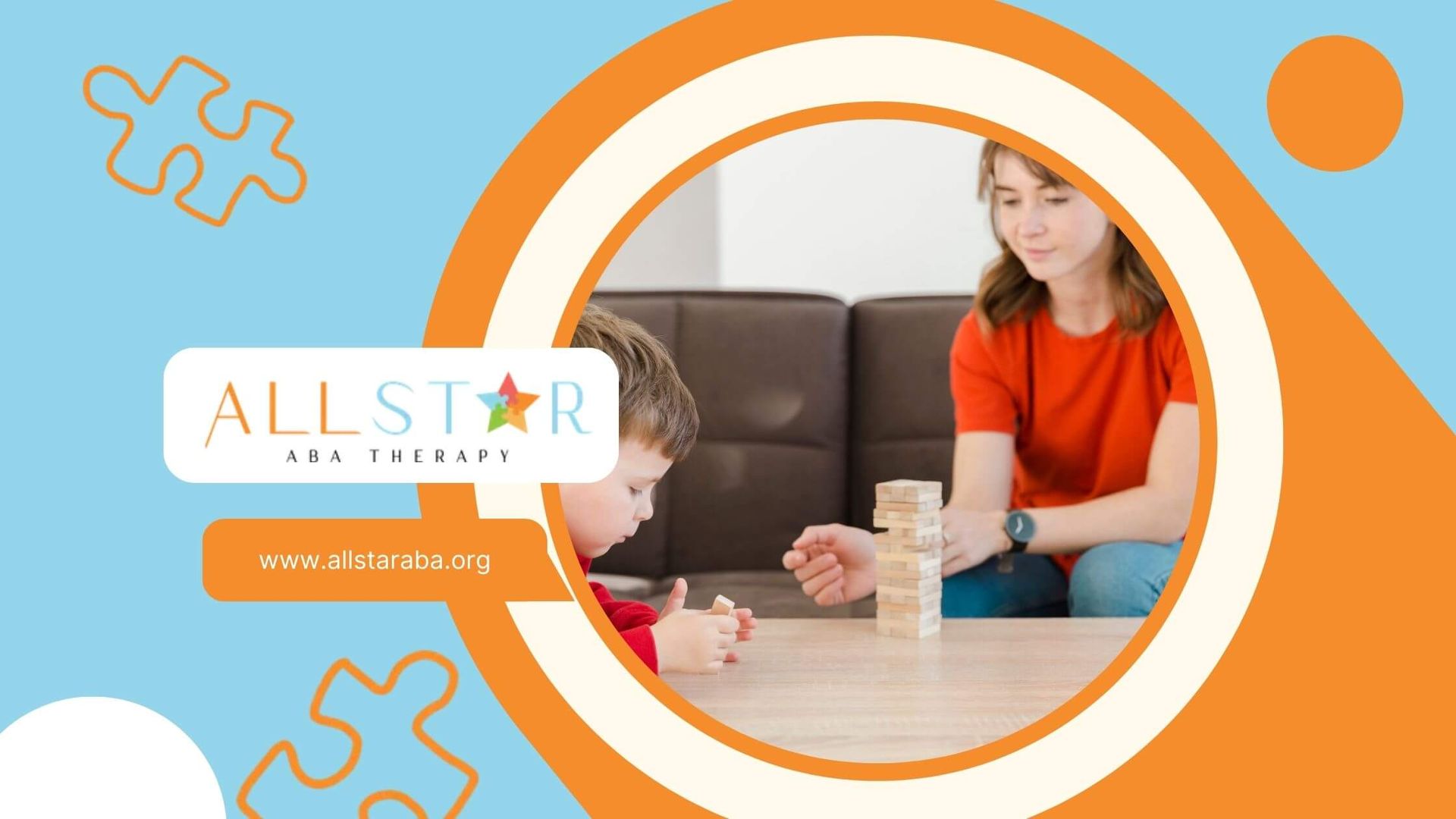New Paragraph
A Guide to ABA Therapy Data Interpretation
Understanding ABA Therapy Statistics
In the field of Applied Behavior Analysis (ABA) therapy, statistics play a crucial role in measuring progress and determining the effectiveness of interventions. ABA therapy has been used to help children with autism and related developmental disorders since the 1960s, with methods that have been studied for decades.
Evolution of ABA Therapy
Over time, ABA therapy has evolved to become a comprehensive and individualized approach to treatment. ABA programs are tailored to meet the needs of individual learners, focusing on developing skills to promote independence and success in the short and long term. A qualified behavior analyst designs and oversees ABA programs, conducting assessments, setting treatment goals based on the individual's skills and needs, and measuring progress through data collection in therapy sessions.
ABA therapy involves various techniques to understand and change behavior. These techniques include positive reinforcement, antecedent-behavior-consequence analysis, and breaking down skill development into small, concrete steps. The ultimate goal of ABA therapy is to enhance the quality of life for individuals with autism by teaching them functional skills, reducing challenging behaviors, and promoting social interaction and independence.
Tailored ABA Programs
One of the key strengths of ABA therapy is its ability to be tailored to the unique needs of each individual. ABA programs are designed based on comprehensive assessments of the learner's skills, strengths, and areas for improvement. The data collected during therapy sessions provides valuable insights into the effectiveness of specific interventions and helps guide the decision-making process for adjusting treatment strategies.
ABA therapy is recognized as an evidence-based best practice treatment for autism. Numerous studies have shown that intensive and long-term ABA therapy can lead to improvements in intellectual functioning, language development, daily living skills, and social functioning in children and adults with autism. These research studies provide valuable data and insights that contribute to the ongoing refinement and improvement of ABA therapy practices.
In the next sections, we will explore the impact of different therapy settings, treatment intensity, and duration on the outcomes of ABA therapy. We will also discuss the importance of key performance indicators (KPIs) and how they influence decision-making in ABA practices. Additionally, we will provide guidance on optimizing ABA therapy hours by determining therapy intensity and adjusting therapy duration.
Impact of ABA Therapy Setting
The setting in which Applied Behavior Analysis (ABA) therapy takes place can have a significant impact on a child's rate of learning and progress. Different settings, such as center-based therapy and home-based therapy, can influence learning rates and various factors related to progress.
Learning Rates in Different Settings
Studies have shown that the setting in which ABA therapy occurs significantly impacts a child's rate of learning. Research conducted by the National Center for Biotechnology Information found that participants in the study mastered significantly more exemplars per hour when receiving center-based services compared to home-based services. In fact, participants who received both home and center-based services mastered 100% more exemplars per hour while at the center than at home.
The study provides preliminary evidence that center-based ABA therapy may result in higher rates of learning compared to home-based therapy. The presence of a structured environment, reduced distractions, increased opportunities for socialization, and improved generalization of skills are factors that contribute to the enhanced learning rates observed in the center-based setting.
Factors Influencing Progress
Several factors related to the treatment setting can influence a child's progress in ABA therapy. These factors include:
- Distractors: The presence of distractions, such as noise or other stimuli, can impact a child's ability to focus and learn. Center-based settings often provide a controlled environment with fewer distractions, allowing for more focused learning experiences.
- Supervision: The level of supervision and support provided in different settings can affect a child's progress. In center-based settings, trained professionals can closely monitor and guide the child's learning, providing immediate feedback and reinforcement.
- Opportunities for socialization: Interactions with peers and socialization opportunities play a vital role in skill development and generalization. Center-based settings offer structured opportunities for socialization, allowing children to practice social skills and learn from their peers.
- Generalization of skills: Generalization refers to the ability to apply learned skills to different settings, people, and situations. Center-based therapy often exposes children to a variety of environments and individuals, facilitating the generalization of skills beyond the therapy setting.
It is important to consider these factors when determining the most suitable setting for ABA therapy. While center-based therapy may provide advantages in terms of learning rates and progress, each child's individual needs and circumstances should be taken into account.
To optimize ABA therapy outcomes, it is crucial to assess the child's response to the therapy setting and make any necessary adjustments. Ongoing data collection and analysis, as well as collaboration between ABA therapists and families, can help identify the most effective setting and tailor the therapy program accordingly. For more information on data interpretation and outcome measures in ABA therapy, refer to our articles on statistics in ABA therapy and ABA therapy outcome measures.
Effect of Treatment Intensity and Duration
When it comes to ABA therapy, the intensity and duration of treatment play significant roles in determining the effectiveness of the intervention. Understanding the relationship between treatment intensity, duration, and skill acquisition is crucial for optimizing outcomes for individuals receiving ABA therapy.
Learning Objectives and Treatment Intensity
Research studies have shown that treatment intensity, measured by the number of therapy hours per week, is a significant predictor of learning objectives mastered by children with autism spectrum disorder (ASD) across various domains. In fact, treatment intensity and duration were both found to have significant effects on the number of learning objectives mastered across eight curricular domains, including academic, adaptive, cognitive, executive function, language, motor, play, and social skills.
The highest effect sizes were observed in the academic and language domains, indicating that these areas require high treatment intensity to achieve optimal outcomes. The study revealed that increasing treatment intensity, measured in hours per week, was positively associated with the number of mastered learning objectives. Therefore, dedicating more hours of therapy per week can lead to greater progress and skill acquisition.
Treatment Duration and Skill Acquisition
Aside from treatment intensity, treatment duration also plays a crucial role in skill acquisition. Research has shown that increased treatment duration predicts a higher number of mastered learning objectives across various domains. Treatment duration had a stronger impact than treatment intensity on treatment outcomes, suggesting that some skills require long-term treatment to be acquired.
The academic and language domains were particularly responsive to treatment duration, with substantial effect sizes observed. This suggests that prolonged treatment duration is necessary to achieve optimal outcomes in these areas. It is important to note that other domains, such as adaptive, cognitive, executive function, motor, play, and social skills, also benefit from increased treatment duration.
To optimize the effect of treatment intensity and duration, ABA therapists must carefully assess the needs of each individual and tailor the therapy program accordingly. By increasing the intensity and duration of treatment, therapists can maximize the number of learning objectives mastered and enhance skill acquisition across various domains. Ongoing data collection and analysis are essential for monitoring progress and making informed decisions regarding treatment adjustments.
By understanding the impact of treatment intensity and duration on skill acquisition, ABA therapists can develop tailored and effective intervention plans. The use of statistics in ABA therapy and ABA therapist data collection can provide valuable insights into the progress and effectiveness of the therapy program. By continuously evaluating and optimizing treatment intensity and duration, ABA therapists can help individuals with autism reach their full potential across multiple domains of development.
ABA Therapy Data Interpretation
When it comes to ABA therapy data interpretation, there are several key metrics that can provide valuable insights into the effectiveness and progress of the therapy. Two important aspects to consider are ABA therapy continuation rates and adaptive behavior gains.
ABA Therapy Continuation Rates
Monitoring and analyzing the continuation rates of ABA therapy can provide valuable information about the duration and effectiveness of treatment. According to a study published by the NCBI, approximately 66% of children referred for Applied Behavior Analysis (ABA) stayed in services for 12 months, while less than half (46%) remained in services for 24 months. It's important to note that various factors can influence these rates, such as the child's characteristics, family dynamics, and access to services.
The study also found that having a history of special education was associated with longer time spent in ABA, while having a single parent was associated with discontinuation of ABA. These findings highlight the importance of considering individual factors when interpreting continuation rates and making informed decisions regarding the duration of ABA therapy.
Adaptive Behavior Gains
Assessing adaptive behavior gains is another crucial aspect of ABA therapy data interpretation. Adaptive behaviors refer to the skills and abilities that individuals use to function in their daily lives. A minority of children in the aforementioned study received a full ABA dose (28%), but even the lowest functioning children experienced clinically significant adaptive behavior gains after 24 months of ABA therapy.
Among the children who received ABA therapy for 24 months, the average adjusted Adaptive Behavior Composite (ABC) score increased by 2.49 points. It is worth noting that children with the lowest baseline adaptive level had a significant ABC increase of 4.46 points associated with each 12 months of time spent in ABA. These findings demonstrate the positive impact of ABA therapy on adaptive behaviors, highlighting its effectiveness in improving functional skills and independence.
By analyzing ABA therapy continuation rates and adaptive behavior gains, therapists can gain valuable insights into the progress and effectiveness of the therapy. These data points can inform treatment decisions, help identify areas for improvement, and support evidence-based practices. It is important to consider these metrics in conjunction with other outcome measures and research studies to ensure the delivery of high-quality and individualized ABA therapy (aba therapy outcome measures, aba therapy research studies).
Importance of Key Performance Indicators (KPIs)
When it comes to evaluating the performance and success of an ABA practice, Key Performance Indicators (KPIs) play a vital role. These strategic metrics provide valuable insights that guide decision-making and drive growth and progress within the field of ABA therapy.
Strategic Metrics for ABA Practices
KPIs are measurement systems that exist within an objectives and key results (OKR) strategic framework. They serve as benchmarks to assess the effectiveness and efficiency of various aspects of an ABA practice. By monitoring and analyzing these metrics, practitioners can gain a comprehensive understanding of their practice's performance and identify areas for improvement.
For smaller ABA practices, it can be beneficial to start with a few key metrics and expand as the business scales up. This allows practitioners to focus on the most critical aspects of their practice and gradually incorporate additional KPIs as needed. It's important to adopt a well-rounded approach to KPIs, considering clinical metrics, operational metrics, financial and growth metrics, HR objectives, and other relevant indicators.
Impact on Decision-Making
Monitoring KPIs is not only essential for evaluating the performance of an ABA practice but also for informing decision-making processes. The insights gained from analyzing these metrics help practitioners make informed choices that lead to better outcomes for their clients, staff, and overall practice.
By tracking and interpreting KPIs, ABA practitioners can identify areas of strength and areas that require improvement. For example, clinical metrics can provide valuable insights into the effectiveness of specific treatment plans or interventions. Operational metrics can help evaluate the efficiency of administrative processes and resource allocation. Financial and growth metrics can guide financial planning and business expansion strategies. HR objectives can shed light on staff performance and satisfaction. These metrics work together to create a comprehensive picture of the practice's performance and inform strategic decision-making.
It's important for ABA practitioners to consider how different performance systems and measures within their practice impact each other. Understanding how activities and outcomes complement or conflict with one another can lead to a more cohesive and successful practice. By aligning KPIs with broader goals and objectives, practitioners can ensure that their practice is moving in the right direction.
In summary, Key Performance Indicators are crucial tools in evaluating the performance and success of an ABA practice. By monitoring strategic metrics, practitioners can gain valuable insights that guide decision-making and drive growth. Whether focusing on clinical, operational, financial, or HR objectives, the analysis of KPIs provides a comprehensive understanding of the practice's performance and supports continuous improvement.
Optimizing ABA Therapy Hours
When it comes to ABA therapy, optimizing the number of therapy hours and finding the right balance is essential for achieving the best outcomes. Two key factors to consider when optimizing ABA therapy hours are determining therapy intensity and adjusting therapy duration.
Determining Therapy Intensity
The number of ABA therapy hours a child needs can vary depending on several factors, including the child's skills assessment, parent interview, interfering behaviors, goals, medical needs, and parent coaching needs.
The Council of Autism Service Providers outlines two types of ABA treatment plans - focused and comprehensive. Focused treatment plans typically involve 10 to 25 hours per week, while comprehensive treatment plans range from 26 to 40 hours per week. The comprehensive plan is often recommended for children with deficits in the majority of developmental domains to achieve the best outcomes. Research suggests that 30 to 40 hours per week of ABA therapy are optimal to close the learning gap between children with autism and their neurotypical peers. For children under 3 years old with an ASD diagnosis, 25 to 30 hours per week may be sufficient, while children approaching 3 years old may benefit from 30 or more hours per week.
It's important to note that therapy hours can be adjusted based on the child's response to treatment. As significant gains in functional independence, skill generalization, and reduction in interfering behaviors are observed, therapy hours may gradually be reduced. The goal is to tailor the treatment to individual needs and show improvements over time.
Adjusting Therapy Duration
Determining the duration of ABA therapy sessions is another important aspect of optimizing therapy hours. The duration of each session can vary depending on the child's needs and attention span. Generally, therapy sessions range from 1 to 4 hours in length.
For children recommended to receive comprehensive ABA treatment (26 hours or more per week), committing to this intensity of services can be challenging for parents. However, consistent therapy is emphasized to prevent skill deficits or behavioral challenges. As the child ages, it may be possible to gradually reduce therapy time while still maintaining progress.
By determining the appropriate therapy intensity and adjusting the duration of therapy sessions, ABA therapists can optimize the therapy hours to meet the individual needs of each child. It's crucial to regularly assess and reassess the child's progress to ensure that the therapy hours continue to effectively support their development. Ultimately, the goal is to provide the right amount of therapy to maximize outcomes and help children with autism reach their full potential.
Need Support?
We're Here to Help!
Our experienced team is ready to assist you. Reach out today to discuss how we can support your child's development and well-being.
Get started with expert ABA therapy today.








